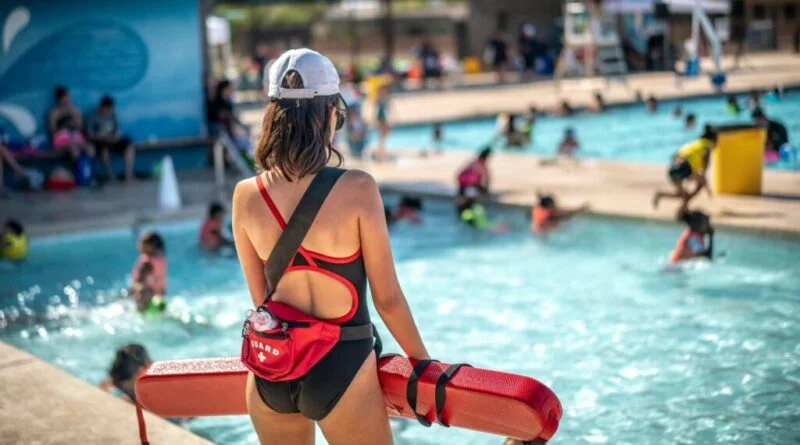America’s Lifeguard Shortage Crisis: States Facing the Biggest Rescue Gaps This Summer

A growing concern is rippling across the United States as a critical shortage of lifeguards threatens public safety and summer recreation. With rising temperatures pushing crowds toward beaches, lakes, and pools, many states are struggling to staff their waterfronts with qualified beach rescuers. The consequences? Closed swim areas, limited safety coverage, and a significant uptick in water-related risks.
Here’s a professional breakdown of why this lifeguard drought is happening, what states are most affected, and why this crisis demands immediate attention.
1. Why the Lifeguard Shortage Is Happening Now
Several key factors are fueling this national shortfall:
-
Post-Pandemic Staffing Issues: Many seasonal workers left the job market during the COVID-19 pandemic and never returned. Certifications lapsed, and the hiring pipeline dried up.
-
Low Pay Compared to Risk: Lifeguarding involves serious responsibility—often life-or-death situations. However, the compensation in many areas hasn't kept up with the role's demands.
-
Aging Workforce & Fewer Teens Working: Lifeguarding was once a go-to summer job for teens. But with fewer teens working and older lifeguards aging out, there’s a sharp gap in replacements.
-
Training and Certification Bottlenecks: Even those who want to become lifeguards face challenges due to limited access to Lifeguard training programs and delays in certification availability.
2. States in Urgent Need of Lifeguards
Based on recent public reports, these U.S. states are facing the most severe shortages:
California
With one of the longest coastlines and busiest public beaches in the country, California faces ongoing struggles to fully staff its lifeguard towers. In 2025, some counties reported being only 70% staffed, forcing partial beach closures and limited patrol hours.
Florida
Despite having year-round beach traffic, Florida is contending with hundreds of unfilled lifeguard positions, particularly in Miami-Dade, Tampa Bay, and coastal panhandle counties. The shortfall puts immense pressure on existing staff and increases emergency response times.
New Jersey
Jersey Shore communities are feeling the pinch, especially in popular destinations like Ocean City and Wildwood. As tourism rebounds post-pandemic, towns are scrambling to hire and train guards in time.
Texas
Lifeguard shortages are affecting both coastal beaches and popular inland swimming areas. Houston and Galveston, in particular, have been vocal about their hiring struggles.
New York
From city pools to Long Island’s beaches, New York’s public aquatic facilities are operating with skeleton crews. Some areas have had to close pools or restrict hours due to staffing gaps.
Hawaii
Despite being surrounded by water, Hawaii’s high cost of living and expensive training requirements deter new recruits. This shortage is especially problematic given the strong surf and high tourist volume.
North Carolina
Popular destinations like the Outer Banks are severely understaffed. Local governments are offering bonuses and extended hours but still struggling to fill positions.
Illinois
Chicago’s lakeshore beaches rely on hundreds of lifeguards each summer. In recent years, the city has failed to recruit enough staff, prompting closures and community concerns.
Massachusetts
Cape Cod and Boston Harbor beaches are experiencing a dire need for certified rescuers. Some towns have increased wages and relaxed minimum qualifications to attract applicants.
Michigan
With thousands of inland lakes and access to the Great Lakes, Michigan’s water safety depends heavily on lifeguards. However, many cities report vacancies in both public pools and beach areas.
3. Impact on Public Safety and Recreation
-
Increased Risk of Drownings: Fewer trained professionals on duty means slower response to emergencies. Tragically, multiple incidents across the U.S. have already highlighted the dangers of under-guarded swim areas.
-
Beach Closures and Shorter Hours: Cities and towns are forced to reduce open hours or shut down access altogether when they can’t ensure public safety.
-
Strained Emergency Services: With lifeguards missing, fire departments and EMTs often get pulled into more water rescue calls, stretching their resources dangerously thin.
4. What’s Being Done (and What Needs to Be Done)
Efforts are underway, but more needs to happen quickly:
-
Increased Wages and Incentives: Some municipalities have raised hourly rates, added bonuses, or provided free training—but results vary.
-
Accelerated Training Programs: New initiatives aim to fast-track certifications to get guards on duty quickly while maintaining safety standards.
-
Public Awareness Campaigns: States are encouraging young adults and college students to consider lifeguarding through social media and school partnerships.
-
Legislative Support: Some regions are pushing for government funding to support aquatic safety programs and staffing.
5. What This Means for Swimmers and Beachgoers
Visitors should be more cautious than ever:
-
Always swim in designated areas with available staff.
-
Never assume a water area is guarded unless you see a lifeguard present.
-
Keep an eye on children and weak swimmers at all times.
-
Follow all posted safety warnings and beach closures.
Conclusion: A Summer of Uncertainty, Unless Action Is Taken
America’s lifeguard shortage isn’t just an employment issue—it’s a public safety emergency. As the heat of summer continues, the lack of trained beach rescuers places millions of lives at risk. Whether you’re a parent, swimmer, or policymaker, this growing crisis deserves your attention. Collective, urgent action is the only way to keep our beaches safe, staffed, and open.







